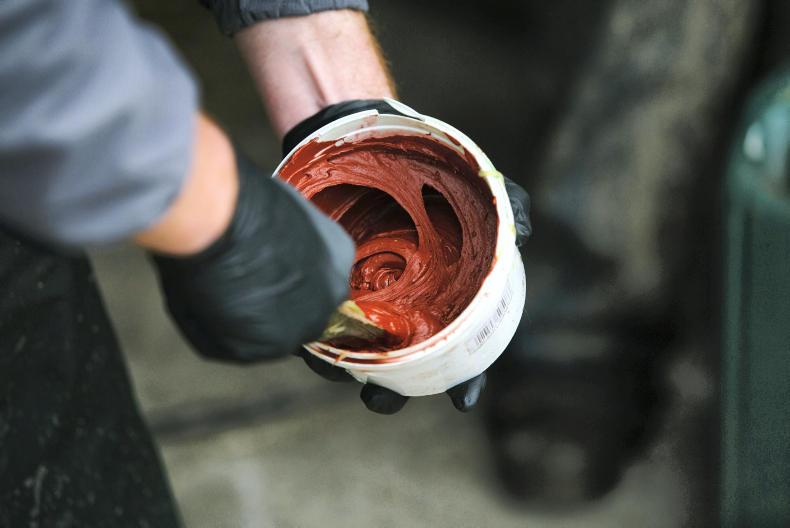Autumn has definitely arrived after storm Callum last week. The leaves are building up on the ground around the farm yard, a certain sign that we are coming to the end of another year.
Another sign is the breeding season which is in full swing here on the farm at present. The first cycle has just finished with the natural service ewes; all going well we won’t have many repeats.
At this stage I will start raddling the rams and changing the colours every 10 days. This will help identify any ewes that are repeating and it will also identify what ewes are due between different dates come the spring. We will be pulling the sponges from the first group of ewes for AI today, 18 October with insemination taking place on Saturday.
We will divide up the ewes into three groups and remove the sponges at three different time periods during the day to coincide with approximate time to be AI’d on the Saturday morning, middle of the day and afternoon. This is to hopefully get the best possible chance of conception. We will then repeat this process again next Monday with the second group for AI’ing on the Wednesday.
The number of lambs has reduced well lately with approximately 20% of the lambs remaining on farm. The ram lambs which were grazing the Redstart have now all been sold with only a small group of later born rams left along with the tail end of the ewe lambs. These have been receiving meal for a few weeks now and are preforming well.
I will continue to draft the ewe lambs from 45kg and the rams from 46kg despite the recent increase in the deadweight limit as the cost to increase the carcase weight on these lambs can possibly be more than what we would receive considering the price of ration and my own labour included, not to mention the extra grass they will consume over the extra length of time they will be on farm.
Grass growth
Grass growth over the last few weeks has been very good overall but I only have 30 days grazing ahead at present whereas I would prefer to have 40+ at this stage. I have drawn up my autumn rotation plan and will stick to it as my big objective now is to set the farm up for next spring. Thankfully the August sown Redstart has come on well over the last month and it will make up for any shortfall in autumn grass as well as help stretch my silage supply further.
We are planning to get the last of the farm yard manure(FYM) spread onto some of the fields with the highest requirement for nutrients such as the ones that have the lowest Phosphorus and Potassium indexes on the farm before the closed period and while field conditions allow.
As I am trying to build soil fertility on the farm I take regular soil samples to help me decide where my FYM is applied yearly. Given that I had to skip some of the fields last year due to the bad weather, I will be stretching the dung as far as possible this autumn.
Before I started planning where my valuable home-produced nutrients were applied, they were simply applied to whichever areas were convenient for me at the time of spreading resulting in only a few convenient fields receiving all the nutrients unnecessarily.
After seeing an advertisement for a soil fertility conference in last week’s publication I plan to attend it to hopefully learn a thing or two more about the soil that is so essential to the way we farm today and into the future.






 This is a subscriber-only article
This is a subscriber-only article










SHARING OPTIONS: